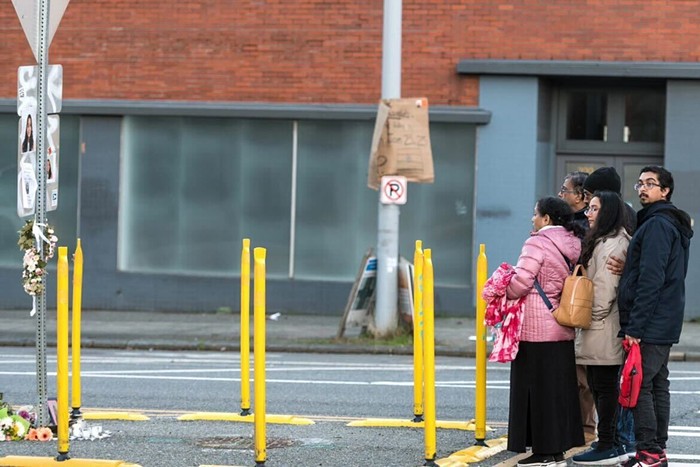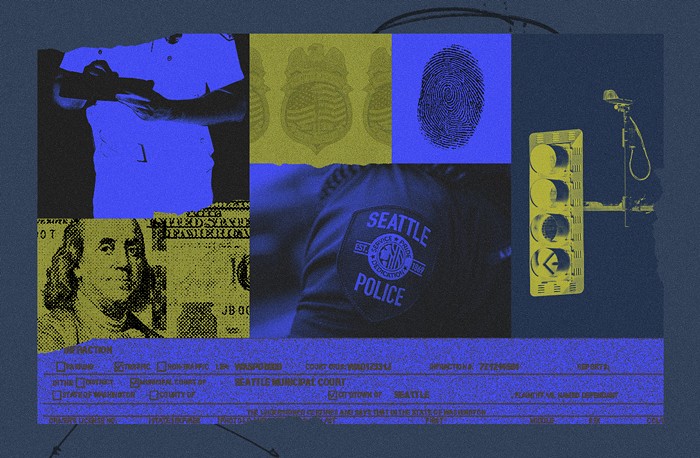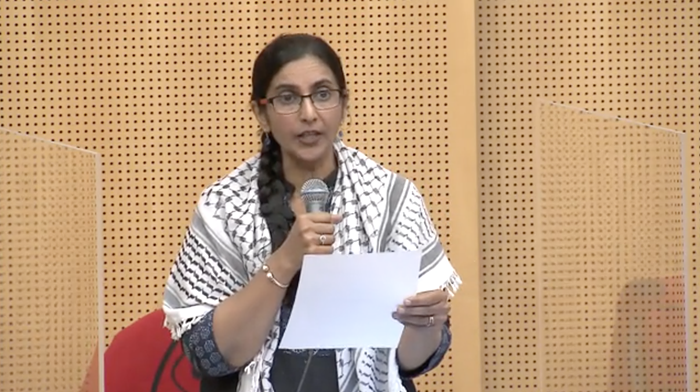
If you haven't voted yet—which, looking at the numbers, a lot of you haven't—you're going to be sitting down with your ballot and a bunch of important questions in front of you today. (Or tomorrow. Or, if you're an expert procrastinator, Tuesday morning.)
One of those questions is whether you want to pay the city higher property taxes in order to fund transportation projects. And, if you've seen any of the mailers in your mailbox, or ads on sites like this one, you've seen two very different narratives about what's being voted on here.
On the pro side is a list of a bunch of projects that sound pretty damn great and that we're being told this levy would fund. On the anti-side are statements like this: "zero promised projects are guaranteed" with "promised" wrapped in scare quotes.
What are you supposed to make of this?
It's true the Move Seattle levy includes language that says the projects are "illustrative only and shall not be mandatory." But that doesn't make it a free-for-all slush fund, supporters say.
While the levy doesn't require the city to spend the money on the exact project list it's put out, the city is limited to spending certain set amounts of money on three categories set out in the levy: the safe routes programs, congestion relief, and maintenance and repair. Significant detours from the plans for spending in each of those categories would require a city council supermajority.
But, what do those categories mean? The opposition argues that the city could chalk Bertha up to "congestion relief" and, with enough votes, divert all the money to that underground disaster.
Supporters say that's not how it works. They point to a spending plan that defines the three broad categories into more specific subcategories—like "pedestrian safety" within the larger "safe routes" category, or "maintain streets" within the larger "maintenance and repair" category.
No, there isn't language explicitly prohibiting spending on Bertha or the seawall, admits Shefali Ranganathan by e-mail. Ranganathan is deputy director of the Transportation Choices Coalition, which is campaigning for the levy. "But because the project definitions and restrictions are so specific," she says, "it would be impossible for [the Seattle Department of Transportation] to use any money for the seawall or Bertha because of the council super majority requirement."
Eugene Wasserman, spokesperson for the anti-levy campaign, says supporters are "essentially lying. It’s a tax increase that gives them maximum flexibility."
Supporters agree there is flexibility included in the levy, but say it's limited and necessary. And similar language was included in the last transportation levy, Bridging the Gap.
"The city will change a lot in nine years and we want to make sure that we are delivering projects that are needed and still relevant," Ranganathan says.
An example: The bike/ped bridge the city wants to build near the Northgate light rail station. The levy's project list includes $15 million for that project, but if the city got a federal grant to pay for it, "you want to ensure that we have some flexibility so that the $15 [million] could be used for other light rail projects," Ranganathan says.
For proponents of the levy—including the Stranger Election Control Board—that's the right mix of flexibility and commitment to start addressing the serious needs of our city's lagging transportation system. For opponents, it's too much of a gamble on the largest levy in the city's history. They want the new city council to create a smaller, more specific levy and come back to voters next year. (Though it's worth pointing out here that a majority of city council candidates support this levy as is, so it's unclear why opponents of Move Seattle expect a new council to come back with anything different.)
The pro camp, while open about the measure's flexibility, is also slipping into its own form of stretched statements, promising projects that are planned but can't actually be 100 percent guaranteed. A mailer sent out recently by Let's Move Seattle calls the projects "guaranteed investments." When asked at a recent press conference if he could guarantee the projects on the list would get built, Mayor Ed Murray said, "Yes. I will guarantee it."
Wasserman and the opposition have also criticized the oversight written into the levy, but supporters say this levy has even more oversight protections than the last one. Let's Move Seattle would create a citizen oversight panel similar to the one in Bridging the Gap and bans the city council from dipping into levy funds if the city's regular funding for transportation (about $40 million from the general fund) takes a hit.
Wasserman dismisses the oversight committee idea, saying: "That’s oversight of friends of the mayor and city council. That did not work on Bridging the Gap."
The Seattle Times' Mike Lindblom explored in depth what Wasserman is referring to, in a story about just how much work the city got done with that last levy. The short answer: it's complicated. Just read that story if you want to understand how the city did on its last levy.
As the campaign enters its final days and Faye Garneau continues to dump money into the opposition's message, it's clear supporters are scrambling to prove their levy isn't a blank check.
Have you voted on this thing yet? Do it. Ballots are due Tuesday.


















